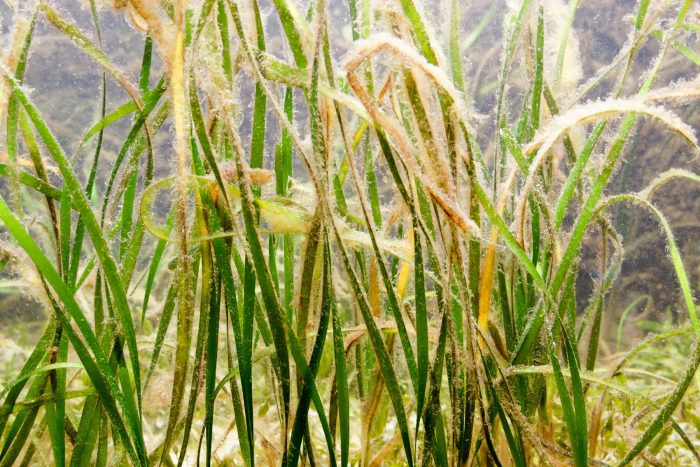Shoal Grass
Halodule wrightii
Shoal grass is a perennial submerged aquatic herb that resembles land grass. Although it can be found around the world, it grows predominantly throughout the southern United States and South America.

